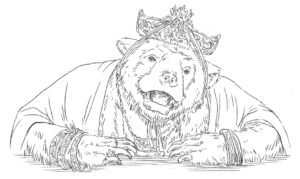Negara Selat
Dr Leonard Andaya had a talk about the history and of the Orang Laut and the important roles they played as well as their decline in Southeast Asia history.
A bit of background: The Orang Laut (translated literally to Sea People) are a group or groups of seafaring nomads living around the region of the Malay Peninsular, Singapore, Borneo and Sumatran islands. Living on boats, they collected marine products, fished and also worked with/for polities on shore. (note: While they are often referred to sea nomads, it wasn’t like they’d go anywhere in the sea, they have different locations that they’d consider home)

International Trade
+ Southeast Asia sits in the middle of the East-West trade, from the west; Europe, Middle East, Eastern coasts of Africa, India, and then to Southeast Asia, to China, Japan, Korea and Ryukyu Islands.
+ Ryukyu historically was very important but like the Orang Laut, we no longer think of them as their importance fades and is lost to history. They have been absorbed by Japan, currently Okinawa Islands.
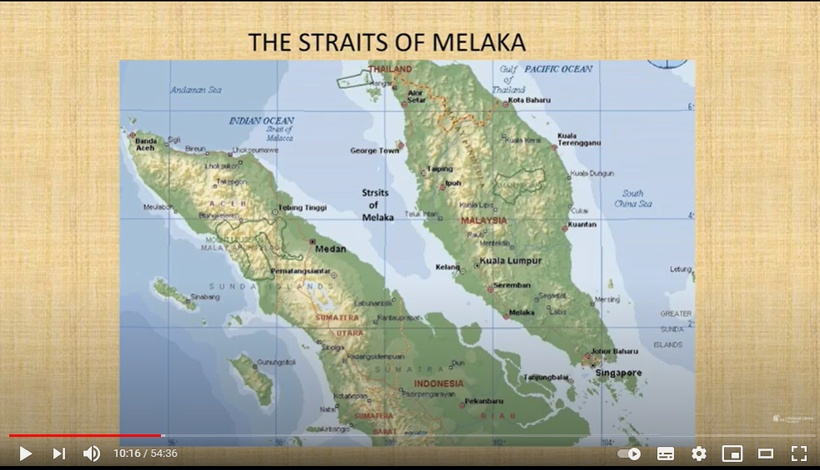
+ The only way to go through the East-West trade are the straits of Melaka or the Sunda Straits (via the Western side of Sumatra) which were used much later. In earlier dates, every trader ship would go through the straits of Melaka.
+ Monsoon winds plays a big role in trading routes, a journey would be cut by more than half if you have the wind behind you.
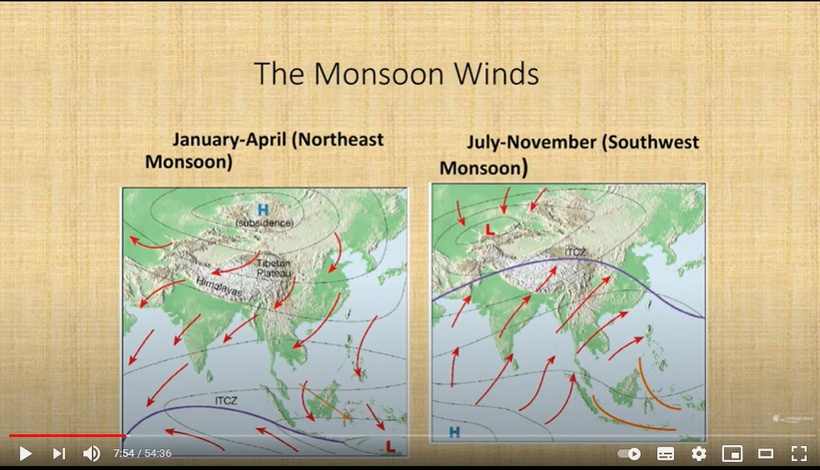
+ One of the things is that the Eastern wind moves in a clockwise direction, which allows the communities of the Eastern parts of Indonesia to take the winds to the straits of Melaka, and then the Southwest wind can bring them to China and then back.
+ This is significant because many of the most important traded products come from Eastern Indonesia. Cloves, Nutmeg, Mace(Mace is the red covering of the nutmeg seed), they all come from Northern Maluku and Sandalwood comes from Timor. Both locations are in Eastern Indonesia.
+ Eastern Indonesia is linked to the straits of Melaka and international trade via this clockwise wind system.
MK: This is a really cool note because I think there’s generally less focus on Eastern Indonesia and it’s cool to learn about how big it’s role is. What is cooler for me, I think is aside from the larger monsoon wind patterns that propel this East-West trade, there’s also a smaller pattern of winds that kind of plugs into the larger system. Like cogs that make the whole system run.
+ The Mountain chains of the Malayan Peninsular and Sumatra protects the straits from both monsoon winds too, so ships can find harbour safely within the straits of Melaka. Monsoon winds are very strong and the coasts are basically not accessible when it’s blowing strong.
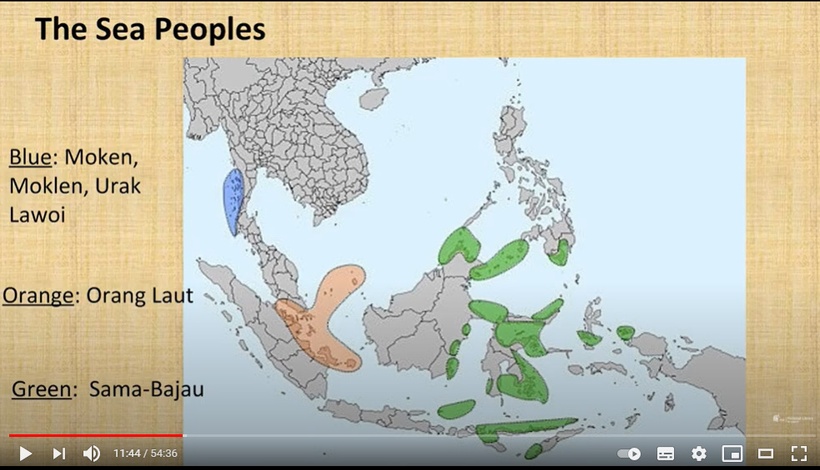
+ There are actually four different groups of sea nomads. His own findings points to sea Nomads being originally being based further up north before gradually moving southwards. Urak Lawoi is a dialect of Orang Laut. (MK: Only shown 3 but I didn’t catch or he didnt mention the 4th one)
+ The old Kedah Kingdom which dates back to 110 likely have sea nomads performing similar functions as the ones that the Orang Laut would perform to later polities in the South (Melaka, Johor, Srivijaya)
+ The Sama Bajau, which is the largest group is widespread, from Southern Philippines to Borneo to Eastern Indonesia as well as pockets of communities in New Guinea Coast.
+ The map of settlements points to not just the route of traders but also places where they could collect marine products to be traded.
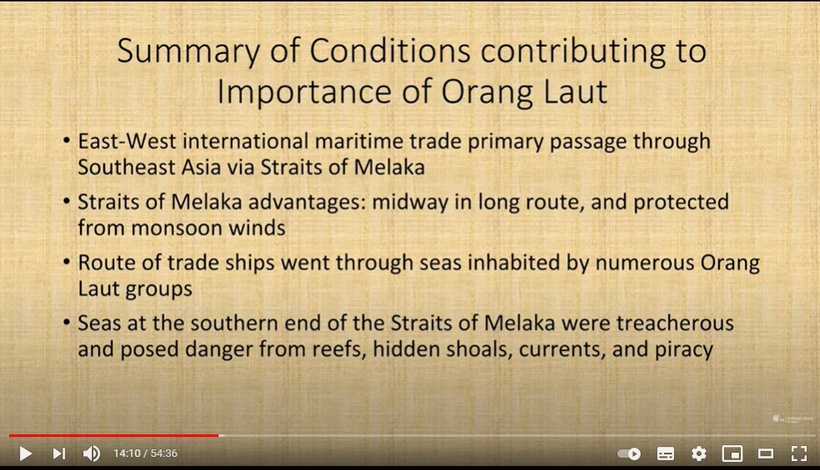
+ The East-West international trade and where Southeast Asia situates is the geographical context of why this region is so important in terms of trade.
+ This is also a very dangerous region. Reefs, shoals, many islands makes currents unknowable. There are also localized wind patterns which makes things unpredictable and dangerous, and it is the local knowledge of the sea that made the Orang Laut very important.
Negara Selat
+ Dr Andaya introduces the term Negara Selat, which he translates to the realm of the straits to describe this specific region. While this term is not used before, it has been referenced variously throughout historical sources.

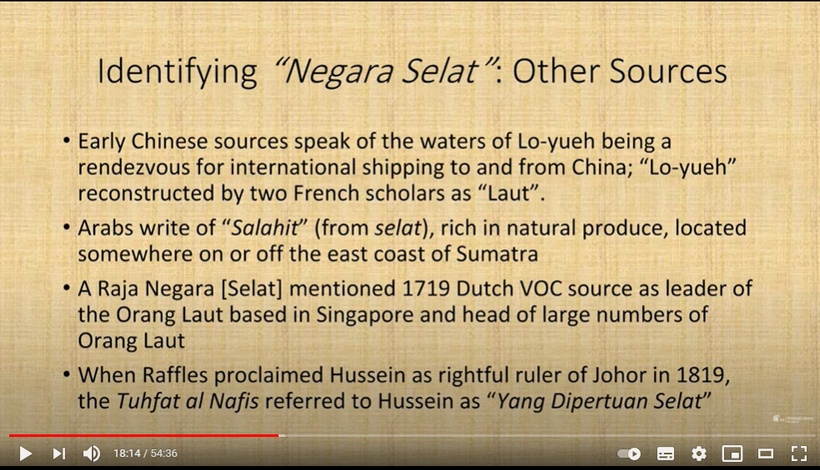
+ These sources points to Laut, the sea and the straits, but they don’t just refer to any sea or any straits but a specific area here in Southeast Asia. This specific place corresponds to the area where the Orang Laut operates and is significant. (Laut means sea in Malay)
+ To “understand” Negara Selat, we need to rethink our idea of space, which is land-centric. To do that, Dr Andaya takes from studies of the Pacific.
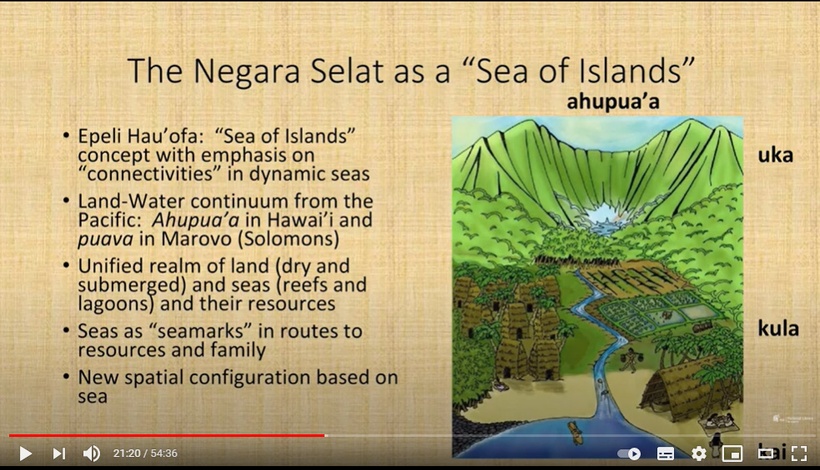
+ We tend to think of the Pacific as just a huge ocean of water, but there are different paradigms of viewing things. Ahupua’a, is a traditional Hawaiian method of parceling land which includes rivers, reefs, the sea and beyond.
+ When we shift the paradigm to be less focused on land and take into consideration the sea, the water then becomes a continuum of the landscape rather than where the borders end. The sea becomes a highway, a connection to other islands, and the communities on them.
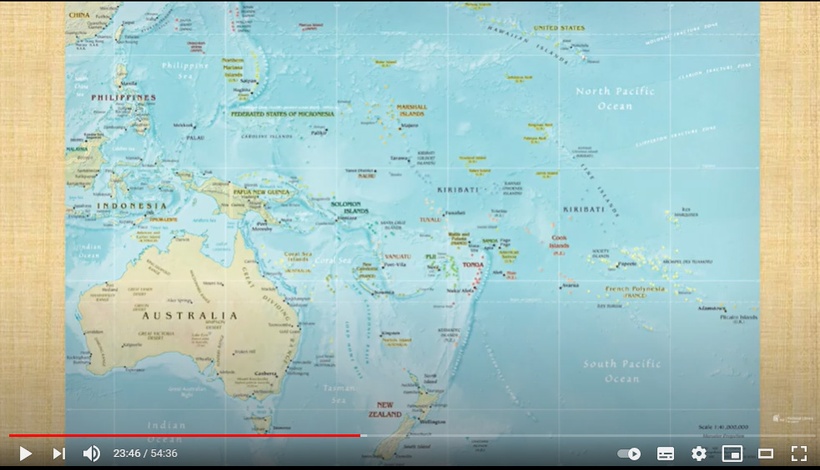
+ If we use this paradigm to view the Pacific, it stops being just an vast empty ocean but a sea of islands and the sea becomes the a connection of pathways. (This was forwarded by a Pacific Islander scholar, but embarrassingly, I’m not able to discern the name)
+ To use this lens to view the Negara Selat, the seemingly borderless sea then becomes a connections of different clusters of islands and clusters of Orang Laut communities. And these different communities are very connected.
Orang Laut
+ A French archaeologist from an upcoming book argues that the Orang Laut originally came from Malay communities which broke off to take advantage of new economic opportunities arising in the sea.
+ Searching for sea products led the Orang Laut to be familiar with their respective areas, knowing the wind, the tides, the reefs well.

+ They are not a kingdom but rather small groups of boats led by a elders of chosen leader, these groups of boats operates in their own space as their own unit separate from other Orang Laut groups.
+ This is from a modern anthropological study of Orang Lauts but we could extrapolate their relationships between each groups of Orang Laut: while they have their own “area”, they also share the sea/resources. For example, if there is a large school of fish, other groups of Orang Lauts are allowed to come fish there with the understanding that that the “host” group are allowed to do the same.
+ There were historical records that show that they would also come together for major projects, some fishing expeditions lasts for months so they would go in large fleets, up to 25 boats. When they attack ships, they also attacked in masses, from 50 to 100 boats.
+ They were feared by traders because they knew the waters well.
+ They are not a monolithic entity, different groups have different loyalties to different kingdoms (even fighting against each other siding with different rulers)
+ Some groups are more prestigious than others, some groups have reputations of being better warriors, a group known to be feared warriors is the Orang Gelam.

+ Variety of boats that they would have, they would have built boats based on the conditions of where they were. The photo on the left are Homeships and they would have used bigger ships for piracy and shipping expeditions.
+ The Ilanun (also a seafaring people) are a group operating from Borneo/Southern Philipines, had huge ships, able to carry over 200. The Orang Laut never had big boats like that.
+ The Orang Laut’s relationship to Malay entrepot states (Melaka, Srivijaya, Johor) is very important, they essentially serve as collectors of sea produce as well as the navy and coast guard.
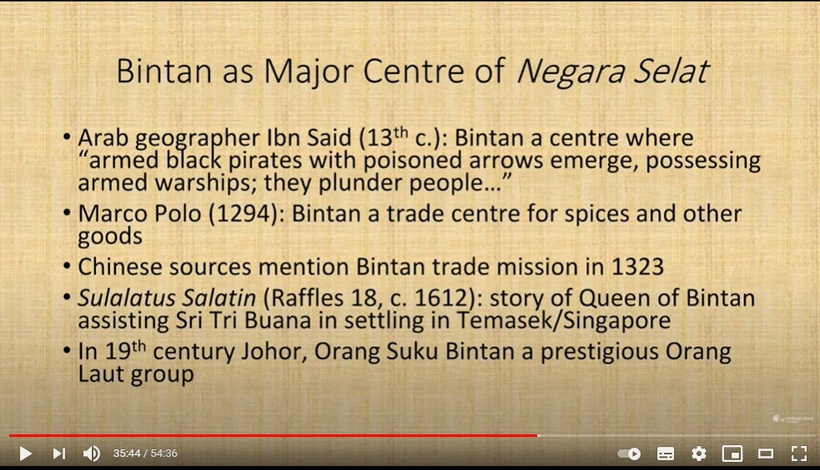
+ Bintan as a major centre of the Negara Selat (these days Bintan is an island known to Singaporeans as a leisurely getaway which belies it’s history)
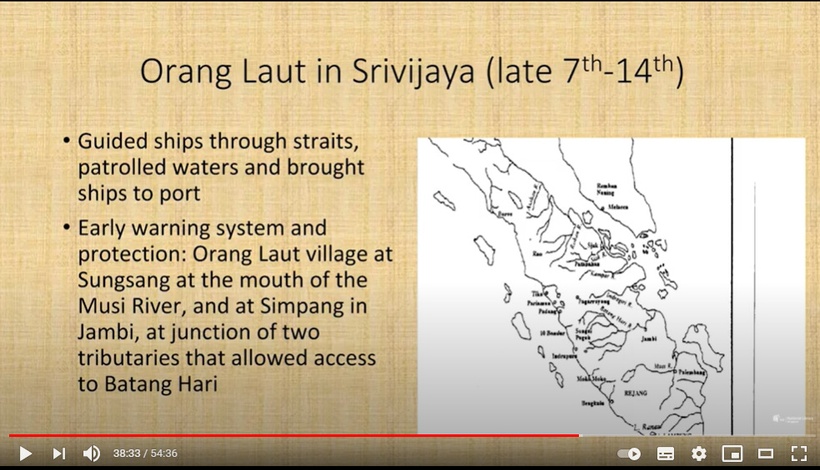
+ While Srivijaya was a trading entrepot, it’s capital was further up along Musi River and considerably far inland from the sea. However, the Orang Lauts have their villages right at the opening of the river. A crucial point where they could protect Srivijaya from attacks from the sea.
+ When Srivijaya moved to Jambi, the Orang Laut village was situated at a junction of two tributaries, serving to help guide ships up the right river or to stop attacks.
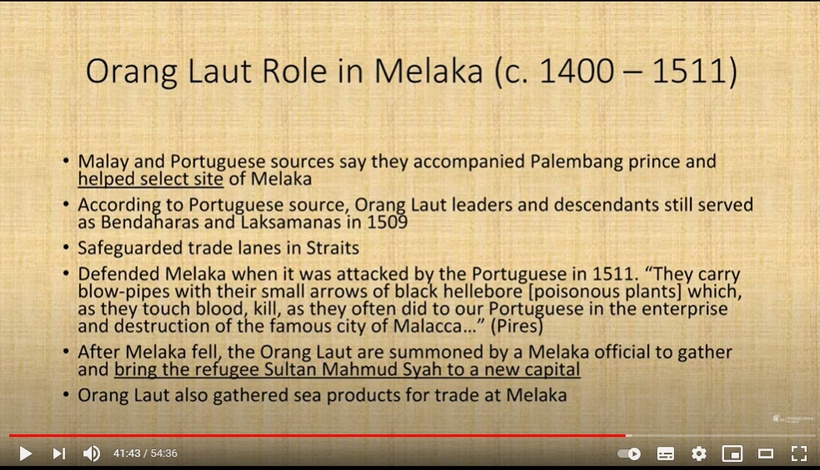
+ The Orang Lauts helped with the establishment of Melaka and have held many important positions in Melakan court. (MK: In one of his books that he believes that the definitive Malay warrior, Hang Tuah is actually an Orang Laut because as an admiral, he would have commanded the Orang Laut and most likely have been an Orang Laut leader)

+ The Orang Laut performed similar functions for the Johor Sultanate.
Decline of Orang Laut
+ The decline began after the regicide of Sultan Mahmud of Johor, and the Bugis, also a sea people from Eastern Indonesia slowly took power, taking over roles that the Orang Asli used to perform, they also attacked and pushed the Orang Laut aside.
+ Further decline came during the 19th century as the economy changed to a plantation/mining economy and sea produce became less important, less economic importance meant a further loss to status.
+ The introduction of steamships made the traditional roles Orang Laut performed (knowing weather/wind/sea conditions) redundant.
+ Perceptions of the Orang Laut quickly changed. In Western records, the descriptions changed from being important and even feared to negative and even derogatory. Because being settled and tilling the land was considered civilized, the Orang Lauts were considered the opposite.

+ An example of the derogatory depiction of the Orang Laut, the undress was seen as a signifier of uncivilized nature, while the Malays, dressed up on the right was more civilized. But more than likely, Malays would just be as undressed in the tropical heat. MK: If I’m remember correctly from my readings, Orang Lauts would also be wearing the dresses of the Malay court they serve, clothing and textiles is one of the gifts bestowed to important individuals in court.
+ Being forgotten and changes of perceptions are not uncommon, the Chams of Central and Southern Vietnam once were important polities, now marginalized minorities in Vietnam and Cambodia. The Mons once important, too are now absorbed by Thais and Burmese.
MK: I read this from one of his/their books, Orang Lauts basically serve to be navies/pirates of Malay entrepot polities and in return the sea nomad leader is bestowed titles and therefore legitimacy and authority. There’s also an interesting aspect that because royalty is divine, that legitimacy then is supernatural, that divinity was also a consideration when picking who to serve, there were instances where orang lauts would leave a place rather than serve a ruler that they didn’t think was sanctioned.
Nak Cerita Bigfoot?
Nak Cerita Bigfoot? is a clip of a short interview with Eddy, a young Orang Seletar one of the main groups of Orang Laut.
Some interesting bits of the interview:
+ His grandmother could recognize relatives from old photos taken of the Orang Seletars in 1800s.
+ Living on the boat was important because it was also a vehicle, it allowed you a way to escape war
+ There used to be lots of rituals and taboos in the past. For example, during offerings, until the candle is burnt out, no one can taste the offerings, not even the cook can taste test.
+ There are also rituals to appease guardians spirits before fishing expeditions.
+ Even though the rituals and spiritual stuff does have some benefit, a large part of why it’s not being followed by youths is because it’s too tedious. Following one rule would have you following more. (MK: Tediousness of traditional practices seems to be a repeated reason for it’s loss, I wonder if the simplified and codified practices of Abrahamic faiths contributed to it supplanting indigenous and Hindu/Buddhist beliefs?)
+ Developments (building of embankments, reclaiming of land) is incredibly destructive to the mangrove, which used to be a large food source.

+ Eddy mentions or teases the existence of a Bigfoot in Johor. (Bigfoot in Johor is a thing, there are many groups who believe in it’s existence. Including the Johor branch of Malaysian Nature Society, a prominent environmental NGO. source)
Fantasy Sea Nomads
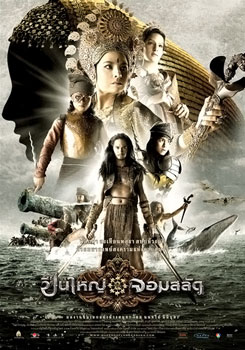
Ananda Everingham plays a sea nomad in Queens of Langkasuka! Look at that giant manta ray! I think it’s the only depiction of Orang Laut in a fantasy film? Though there aren’t that many southeast Asian fantasy films in the first place.
For our own projects, I personally struggle to make sea nomad inspired designs.
The lack of material objects is a big challenge for character design; the immediate instinct would be to fall on the obvious “bond with the sea so talk to sea animals or breathe underwater” but that is tired and I feel having that super power would undermine the acquired skills of sea faring and the intimate knowledge of the sea.
I really dig Disney’s Moana’s treatment of how the sea could relate to a sea-faring inclined person. They showed how dangerous the sea could be, but also how the sea and sailing have an inexplicable draw to a sailor, though I’m not sure how useful this is for my own work yet.
But I’m just thinking out loud here, am still slowly feeling out the conceptual grounding for a fantasy sea nomad.
Stateless-ness
While cool historical trivia and fantasy/fiction making is the focus of this blog, it feels uncomfortable if I just wrote about that with regards to sea nomads.
The thing is, because the unique lifestyle of the sea nomad does not conform to modern national borders, many groups of sea people are denied citizenship and are considered stateless (despite having long history in that region). This statelessness denies them basic state services/protections and makes them very vulnerable to exploitation.
National maritime borders too have limited what used to be their traditional area of activity. For the Sama Bajau, the traditional area they operated was both in Southern Philippines and in Malaysia, but because of these maritime borders, their area where they function and eke their livelihood is now limited.
Here are two articles that talk about these issues.
Bajau Laut: Once Sea Nomads, now stateless
Caught between the sea and the land: the dilemma of stateless indigenous seafarers
+++
Text by Mun Kao. This post was originally published on December 30, 2020 on the A Thousand Thousand Islands Patreon.

